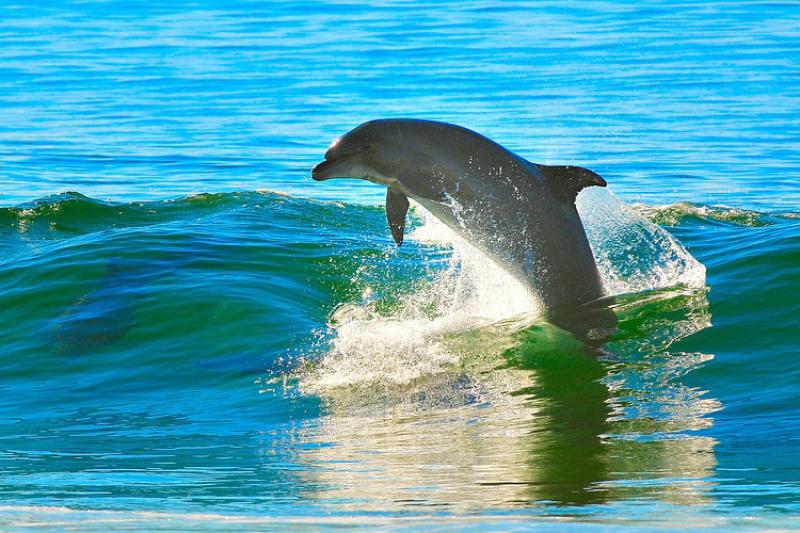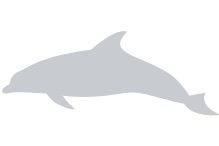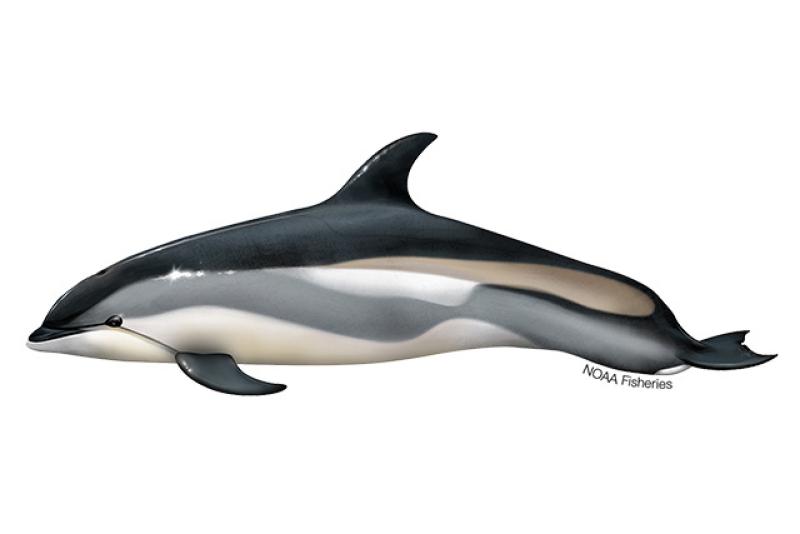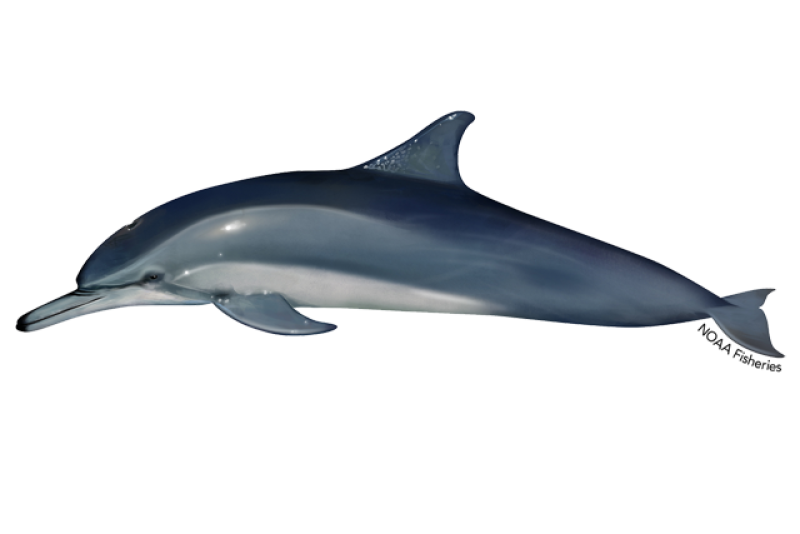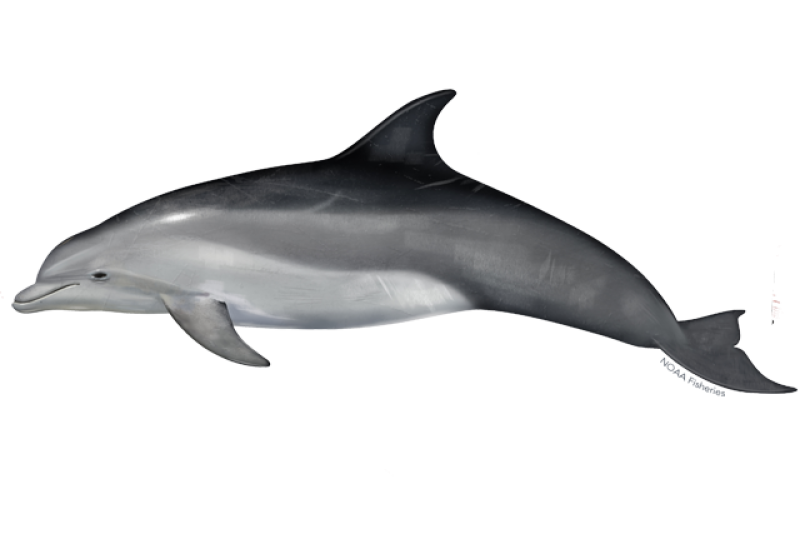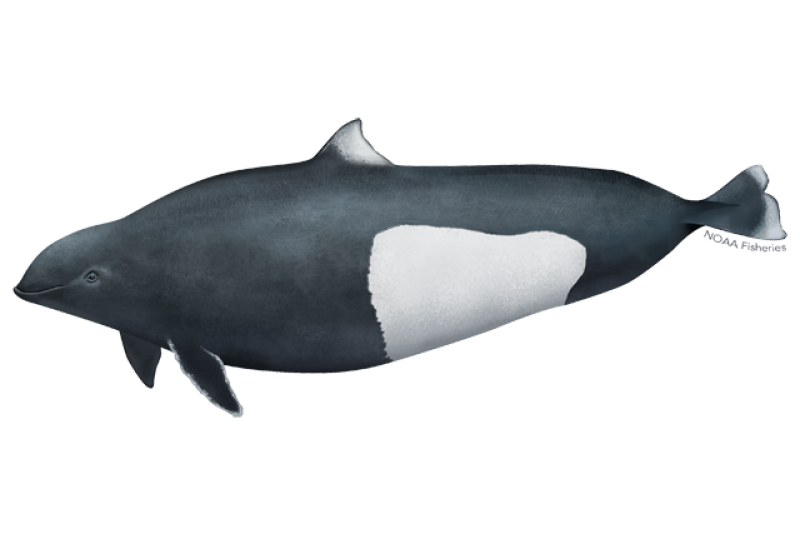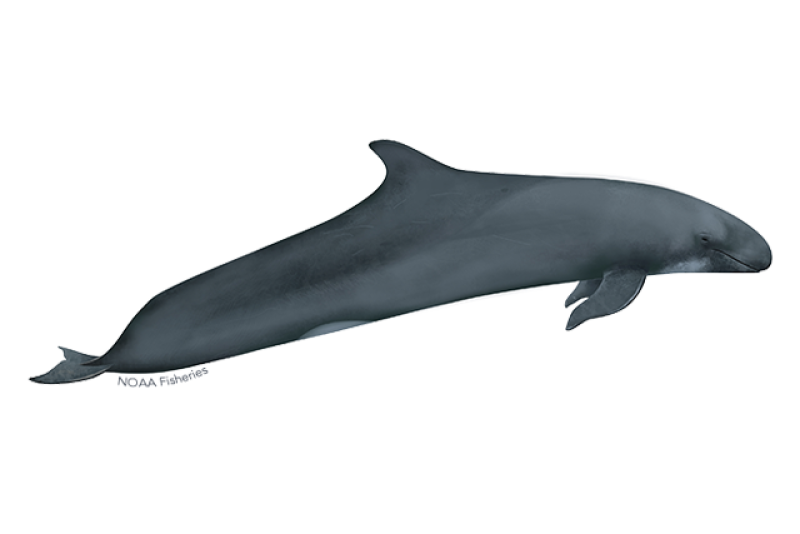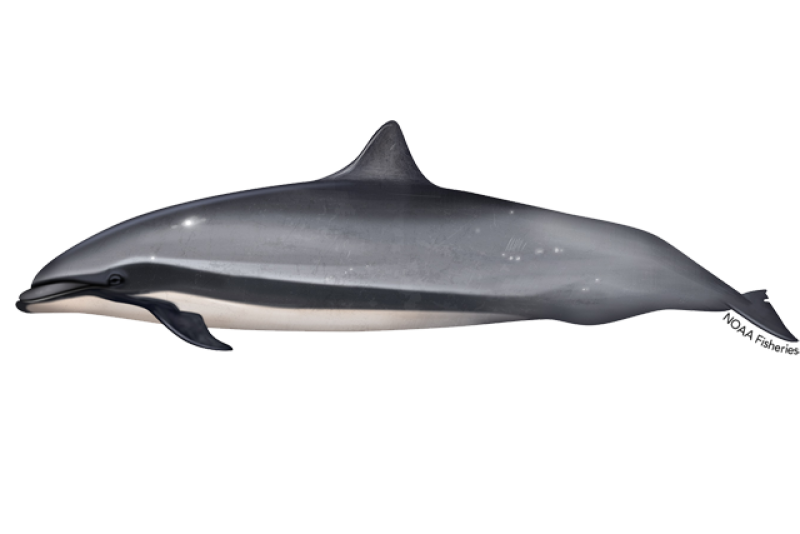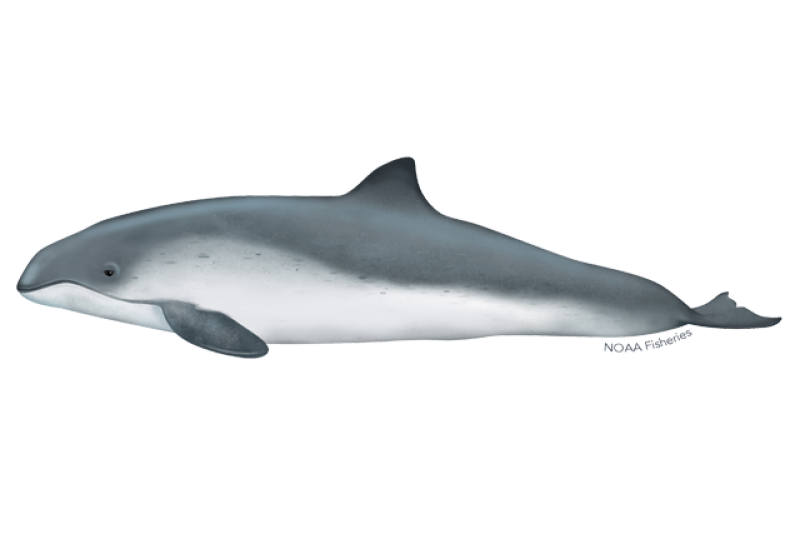Dolphins & Porpoises
Dolphins and porpoises are at the top of the food chain and play an important role in the overall balance of the marine environment. They belong to a group of marine mammals called cetaceans. Marine mammals in the cetacean family include whales, dolphins, and porpoises. These animals are often referred to as “sentinels” of ocean health providing insight into marine ecosystem dynamics. Numerous studies have explored the effects of noise and chemical pollution, habitat degradation, and changes in climate on these animals.
Dolphins and porpoises tend to be social and live in groups. They exhibit complex methods of communication and echolocation making squeaks, buzzes, whistles, and clicks that can be heard from miles away. They are also thought to communicate by slapping the water’s surface with their tails or bodies. They range in size from the small, critically endangered vaquita porpoise to the iconic killer whale—the largest member of the Delphinidae, or dolphin family.
All dolphins and porpoises are protected under the Marine Mammal Protection Act, and some are also listed under the Endangered Species Act. Together with our partners, we work to study, protect, and conserve these fascinating species and their habitats.
Species News
Reflecting on 15 Years of Science Since Deepwater Horizon: Monitoring Recovery
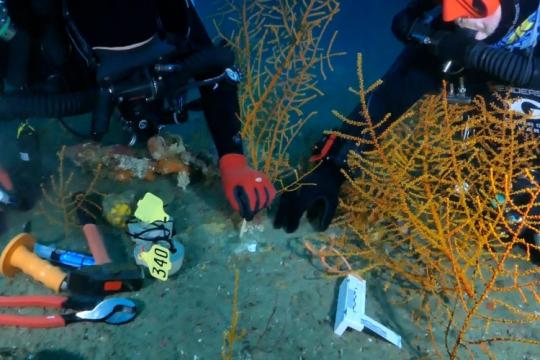 Technical divers Jake Emmert of Moody Gardens and Devin Waddell of Georgia Aquarium reattach a coral colony (Swiftia exserta) to the reef in the northern Gulf of America. Credit: Georgia Aquarium/Jonathan Langham
Technical divers Jake Emmert of Moody Gardens and Devin Waddell of Georgia Aquarium reattach a coral colony (Swiftia exserta) to the reef in the northern Gulf of America. Credit: Georgia Aquarium/Jonathan Langham
Reflecting on 15 Years of Science Since Deepwater Horizon: Supporting Restoration
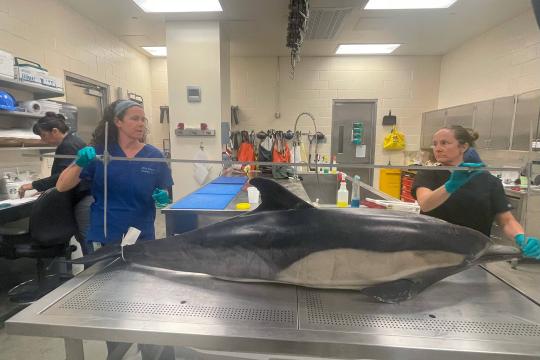 Scientists at NOAA Fisheries' Southwest Fisheries Science Center measure the carcass of a short-beaked common dolphin that stranded near San Diego during the ongoing domoic acid event. They will also collect additional information and samples to assess the dolphin's condition. Credit: Southwest Fisheries Science Center.
Scientists at NOAA Fisheries' Southwest Fisheries Science Center measure the carcass of a short-beaked common dolphin that stranded near San Diego during the ongoing domoic acid event. They will also collect additional information and samples to assess the dolphin's condition. Credit: Southwest Fisheries Science Center.
Stranding Team Responds to More Than a Dozen Dead or Dying San Diego Dolphins in a Single Day
Reflecting on 15 Years of Science Since Deepwater Horizon: Response and Assessment
Multimedia

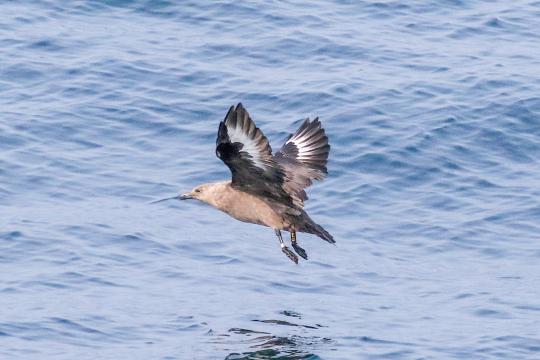
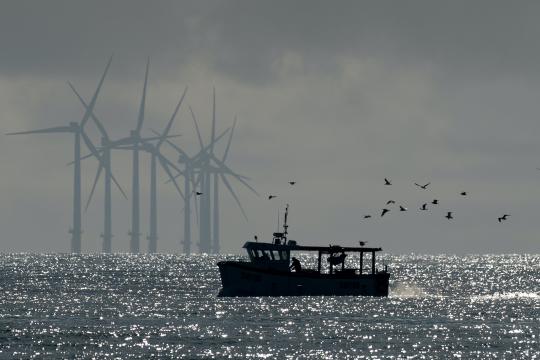 A small fishing vessel near wind turbines. Credit: Bob Brewer on Unsplash
A small fishing vessel near wind turbines. Credit: Bob Brewer on Unsplash
Studying Sound in the Ocean to Prepare for Offshore Wind Development

Research
Killer Whales in the Gulf of Mexico and North Atlantic Off the Southeastern United States
Killer whales occur in the Gulf of Mexico and the North Atlantic, including off the southeastern…
A Decade of Declines in Toothed Whale Densities Following the Deepwater Horizon Oil Spill
We document decadal density declines for seven of eight monitored species groups, including sperm…
2024 Northeast Spring Ecosystem Monitoring Cruise Completed
Sampling was expanded off the Mid-Atlantic to capture more plankton for studying ocean acidification.
Quantifying the Abundance and Survival Rates of Island-Associated Spinner Dolphins Using a Multi-State Open Robust Design Model
The first systematic mark-recapture effort to assess the abundance and survival rates of highly…
Understanding Sound in the Ocean
Levels of underwater noise from human activities—including from ships, sonar, and drilling—have increased dramatically.
